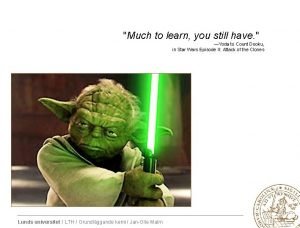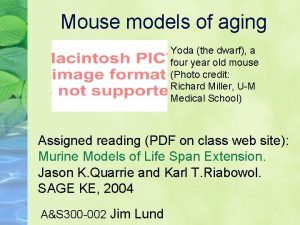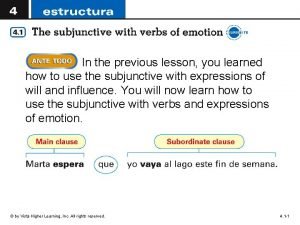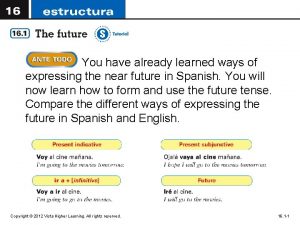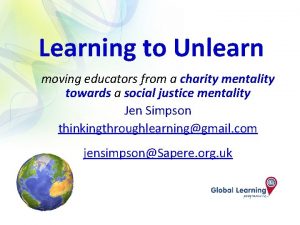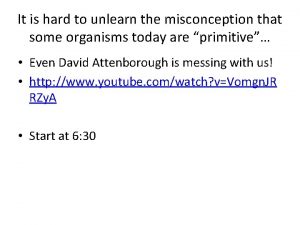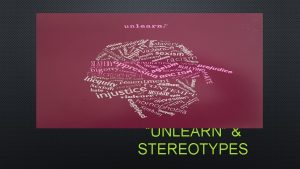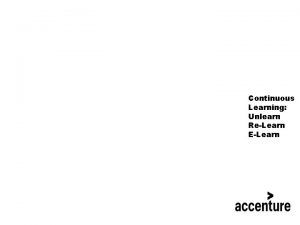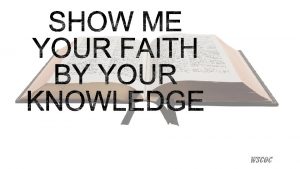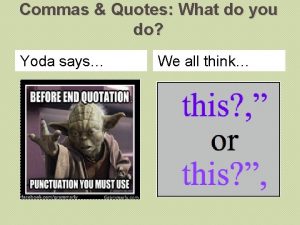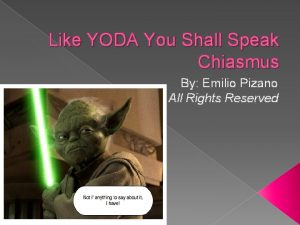Unlearn What You Have Learned Yoda The Critical










- Slides: 10

“Unlearn What You Have Learned” (Yoda) The Critical Study of the Myth of Star Wars By John C. Mc. Dowell Presented by Monica Rios

Introduction At the time Star Wars was released: • Lucas didn’t go to opening night • Felt it was going to be a disaster due to a limited fan base However: a cultural movement occurred that still prevails.

Theory and Method • “Along time ago…”: Star Wars, genre-pastiche, and the fairy tale Pastiche: an artistic work in a style that imitates that of another work, artist, or period The opening sequence “A long time ago…” is reminiscent of the fairy tale and Lucas deliberately used this to link his story to that of legends, which in turn, are linked to our past. Functions similarly to Tolkien’s Silmarillion, the ancestral mythology to Middle Earth

Theory and Method Continued • The reference to the princess was not an allusion to fairy tales, but was in fact shaped around Akira Kurosawa’s adventure, The Hidden Fortress (1958) • The two squabbling peasants Tahei and Matashichi take the form of R 2 D 2 and C 3 PO and the General Rokurota Makabe was mirrored by Obi-Wan Kenobe. The Princess Yuki then became Princess Leia Organa. • Lucas named the Jedi after the Japanese term “jidai geki” meaning period film • He was also inspired by the daredevil adventures featuring Errol Flynn • The Mos Eisley cantina sequence may have been inspired by John Ford’s saloon scene in The Searchers (1956) • There are references to Isaac Asimov’s Foundation stories and Fritz Lang’s Metropolis (1926)

George Lucas and Myth A time of cultural turmoil: Vietnam War was near its end, Americans suffering with traumatic introspection, Nixon implicated in Watergate scandal, economic misery. In the process of making Star Wars, Lucas hoped to create a film that would encourage wonder, bring back the enjoyment of stories, inspire imagination, and to morally re-educate young people through media. Lucas attempts to provide what he considers to be truthful insight into the nature of things and persons, and thereby provide a context for moral reflection and education through a particular visual narrative form. Myths are stories that cultures tell about themselves, and expressions of what cultures deem to be valuable and meaningful. He also suggests that he feels that myths are largely alike.

George Lucas and Myth Continued Lucas studied anthropology for a few years in college where he came across this book. He often checked his writing against Campbell’s version of the hero-myth and found that he was already working within that motif. Put simply, Campbell explains that there is broadly the same hero in each myth and that the essence of the hero is displayed under culturally specific guises. The myth that develops is the hero’s journey of selfdiscovery. In this case, Luke Skywalker.

Case Study Violence and Evil “You don’t know the power of the Dark Side” (Darth Vader) Vader’s costume is symbolic being a combination of Nazism, medieval monastic robes, a samurai girdle, and the Black Knight. The first mention of The Force is in the Death Star conference room where Vader threatens the life of Admiral Motti.

Case Study Defensive Violence “A Jedi uses the force for knowledge and defense” (Yoda) When Luke meets Yoda, he has associated the ideas of “power” with military violence. Yoda couldn’t be more different than Vader. He is small, green, with large ears and large eyes. Yoda’s ideas of The Force and power deal with the virtues of wisdom, self-control and living. He is a servant of The Force and therefore is a servant of all living things.

Case Study Pacifism? “I will not turn and you’ll be forced to kill me” (Luke Skywalker) Luke has made a huge transformation at this point in the trilogy. His clothes are black, he now has a prosthetic right hand that is an indication to his father’s now mechanized state. He could easily be drawn into the emotions of hate, anger, revenge, and self-assertiveness. Luke instead tosses aside his lightsaber leaving him defenseless against the Emperor and is ready to sacrifice himself than do evil. Luke’s value system had to be “unlearned” and replaced with a new way of seeing life and the interrelations of all things.

Conclusion Lucas was critical of the Vietnam War and he claimed that Nixon’s America embodies the oppressive empire as much as the rebellion for freedom. The various features that make the violence in Star Wars look like a politics of revenge against the “evil them” need to be understood differently. Despite the deeper reading and the cautionary message about violence, there still remains a concern: Star Wars’ violence is insufficiently horrifying and emotionally involving, at least not until Revenge of the Sith (Lucas 2005). This form still looks too exhilarating and children may not be dissuaded from engaging their “enemies” in conscious mimicking of their heroes.
 You must unlearn what you have learned
You must unlearn what you have learned Empirisk formel
Empirisk formel Critical semi critical and non critical instruments
Critical semi critical and non critical instruments Spaulding classification system
Spaulding classification system What do you do in your free time spanish
What do you do in your free time spanish Waf logo
Waf logo Yoda
Yoda Yoda lifespan
Yoda lifespan In the previous lesson i have learned that
In the previous lesson i have learned that I have learned that cause and effect
I have learned that cause and effect I have already learned
I have already learned

